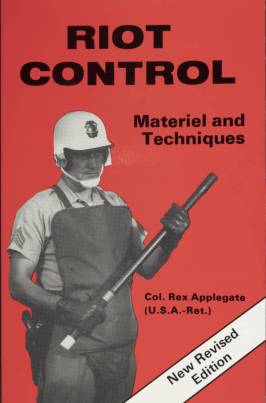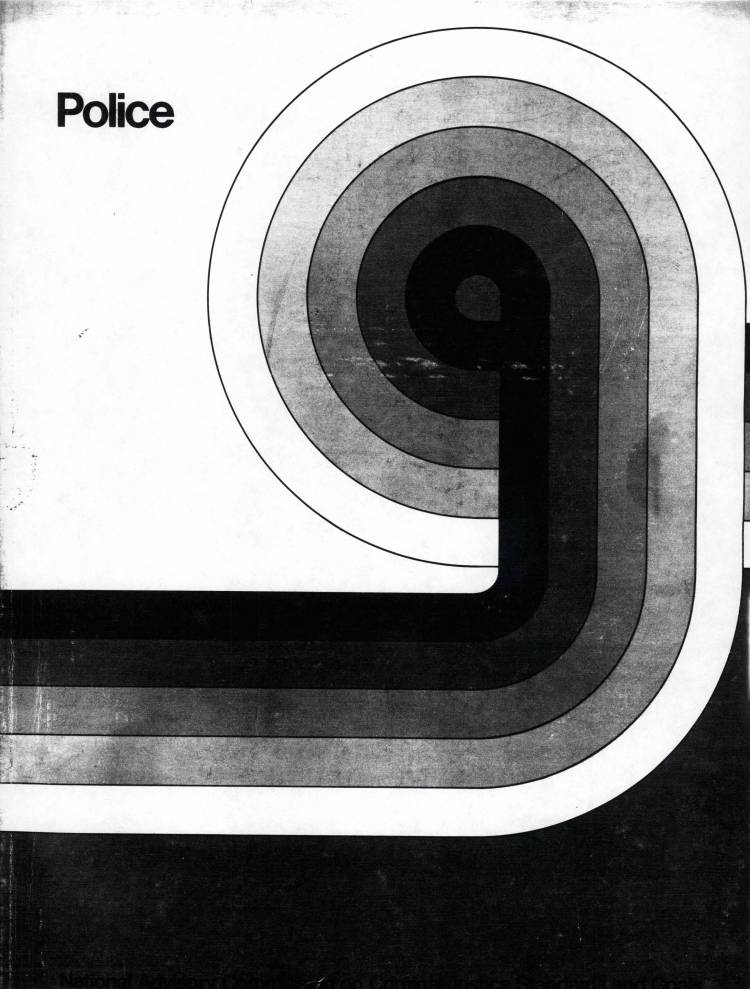By David Helps
In 1984, Hollywood resident Jerry Martz wrote the Los Angeles Times to observe a political impasse. With the fear of crime reaching a crescendo, City Council faced calls to enlarge the Los Angeles Police Department to 8,500 officers, which Chief Daryl Gates sloganized as the “8500 Plan.” Martz’s support for police expansion ran up against his fiscal conservatism. Nevertheless, he offered a sardonic solution: “Has anyone considered having the criminals pay for these expenses?” Only then would “the financial burden” not fall “solely on the law-abiding taxpayers.” With its many Jerry Martzes, Los Angeles rejected tax increases to fund the police department on three separate ballots over the course of the 1980s. “The people have spoken,” one voter wrote to Mayor Tom Bradley. “Government is getting no more money.”[1]
Jerry Martz could never have predicted that calls to defund the police would gain nationwide attention in 2020. While he would have dismissed abolitionist demands to transform public safety, his position reveals a moment when the loudest opposition to swollen police budgets came from fiscal conservatives. As demonstrated in the strange career of James Q. Wilson—whose theory of “broken-windows” policing drew its explanatory power from a single study by a liberal criminologist, though Wilson himself was an ardent libertarian—fiscal austerity and police power have made for strange bedfellows.[2] For a brief moment between the “taxpayer revolt” and the all-out war on crack cocaine users, arguably the most powerful police department in the country was not safe from austerity. [3] Surfacing the contradictions of law-and-order politics forces historians to disentangle police power and police spending, in ways that help explain the unprecedented moment we find ourselves in. As Black-led campaigns to defund police and invest in criminalized communities have entered the mainstream, the politics of “law and order” and fiscal conservatism appear the most fragile they’ve been since the 1970s. By understanding conservative activism to freeze police budgets, and particularly its punitive outcomes, historians can amplify grassroots demands that containing police spending must also mean reducing police power and investing in criminalized communities.

Cities across the United States underwent major budgetary crises during the 1970s, enabling financiers and politicians to impose restructuring, as urban historians like Kim Phillips-Fein and Suleiman Osman have shown.[4] In California, however, neoliberals responded to a grassroots (but not representative) tax revolt. In 1978, voters passed Proposition 13, which prohibited cities from taxing residential property above one percent of market value. From then on, new municipal taxes would need to be approved by two-thirds of voters. Overnight, Los Angeles lost access to $234 million—roughly a quarter of its total revenue.[5] The city council quickly passed an emergency budget with across-the-board cuts—including an eleven percent reduction in police staffing.[6] In a speech at a conference for the nation’s mayors in July 1980, Bradley warned that cities were now “living on a fixed income” and “under orders to operate within a new set of fiscal restraints.”[7]
Bradley interpreted the triumph of Prop 13 as a call for leaner government, but many of its supporters insisted that smaller revenues should not mean reduced services. Eighty-five percent of Californians believed government services could be maintained as they were, if only government was “made more efficient.”[8] If cuts had to be made, large majorities felt they should target welfare programs or the city payroll.[9] These budget preferences followed the belief that the civil rights and due-process revolutions had empowered criminals and welfare cheats at the expense of law-abiding white taxpayers.[10] A few months after the proposition’s passage, a flyer circulated alleging that crime was up fourteen percent in affluent West LA because the LAPD failed to respond to 250,000 calls.[11] While the Mayor’s office struggled to find where these specious statistics came from, others saw the proof in every grisly newspaper headline. “How many more people have to be murdered or mangled in the City of Los Angeles?” one letter-writer demanded to know.[12]
While motivated by a racialized fear of street crime, these voters also believed that a powerful police department did not need to be a more expensive one. In fact, sixteen percent of those polled believed police services would be expanded now that Prop 13 had passed.[13] Over the course of the 1980s, Angelenos voted against increasing the number of LAPD officers on three different occasions.[14] In the nation’s “carceral capital,” in the very decade that prison populations exploded and Ronald Reagan’s War on Drugs raged, voters repeatedly refused to pay for more police.[15] How should urban historians make sense of this impasse, as growing police capacity collided with an age of austerity? As Max Felker-Kantor has brilliantly shown, the political power of the LAPD increased steadily after the 1960s, with the department incorporating liberal civil rights reforms that provided a veneer of permission to operate as it pleased.[16] But as Felker-Kantor also demonstrates, this over-arching story was rife with crises and contingencies. The LAPD had to continually re-legitimize itself in the face of liberal criticism or open rebellion, but also from fiscal conservatives who believed the department could do more with their tax dollars. Residents believed, for example, the LAPD should clean up wasteful corruption and rein in the police union, especially after local media uncovered a police pension fraud scandal in the mid-eighties.[17] Even in the conservative San Fernando Valley, where support for the LAPD was probably highest, only a third of voters supported a new police tax.[18] While opposition to new police taxes also came from the left and from criminalized communities of color, the most vocal Angelenos were those who demanded fiscal restraint and “law and order.” Only like Jerry Martz, they wanted law and order secured on someone else’s dime.

Los Angeles temporarily solved this taxpayer impasse through predatory fines and regressive fees that off-loaded the cost of policing to poorer, racialized, and criminalized residents. The 1982 budget set aside funds for sixty new parking enforcement officers with the explicit aim of generating additional revenue, and in 1983 the city created new or increased costs for everything from wrongly calling the police, to traffic violations, to bail.[19] Even the most basic city services could become a regressive means of extraction. A task force proposed paying for police hires through a waste removal fee, which would rise to almost $140 per year.[20] Such profit-driven policing has become a cornerstone of tax-strapped cities like Ferguson, Missouri, where 25 percent of revenues came from predatory fines and fees.[21] Theorists Jackie Wang and Bernadette Atuahene have separately called this form of urban governance the “predatory state” or “predatory city.”[22] But thirty years before Ta-Nehisi Coates labeled the Ferguson P.D. extortive “gangsters,” Los Angeles pioneered predation as a way to reconcile “tough on crime” politics with shrunken tax revenues.
While LA gained extractive revenues, austerity reigned. Libraries had seen their hours cut by a third, 310,000 trees needed trimming, and streets could only be repaved every 44 years. Decades-old garbage trucks sputtered through these potholed and crumbling streets, which must have left residents wondering what on earth their sanitation fees were going toward.[23] Still, the contradiction between austerity and police power had only been papered over. After all, predatory parking enforcement did nothing to reduce the number of grisly crime headlines. For its part, the LAPD brass resented that growing the department’s capacity meant acting like a bill collector.[24] In 1985, a former Police Commissioner ran for mayor on a promise to hire more police officers by cutting from everything except “police, fire, community development, sanitation, recreation, and parks and libraries.” Never mind that after years of service cuts, these “exceptions” amounted to almost the entire city budget.[25]
After a decade of this creative accounting, a single event in the late 1980s resulted in the LAPD receiving the blank check Chief Daryl Gates so desperately sought. In February 1988, a young woman named Karen Toshima was killed, caught in a gang battle in West LA.[26] With the casualties of drug violence no longer confined to Black and brown neighborhoods in South Central or East LA, shoring up police capacity around the edges would no longer do. The next day, police patrols on the Westside tripled.[27] City Council soon authorized hiring 150 police.[28] As the War on Drugs engaged wealthy, overwhelmingly white parts of the city, the LAPD’s budget became unassailable. The next two budgets included money for more than 900 new officers paid for through a garbage removal fee. With a robust budget of $875 million, the LAPD approached the personnel target of Chief Gates’s “8500 Plan” for the first time.[29] At the start of 1990, Mayor Bradley called for yet another budget increase, this time to add four hundred officers.[30] Having slashed all other services to the bone and reconstituted itself around civilian plunder, Los Angeles entered down the path toward its current priorities. Today, despite an eight percent cut to the police budget line this month, more than half the general fund will still be spent on policing.

As calls to defund police have exploded in the mainstream, the demand to reinvest in criminalized communities has not always come with them. Of the twenty-two cities that have passed legislation to scale-back the police, just seven haven taken steps to reinvest in services for Black and Latinx communities or other criminalized populations. Without a true divest/invest framework, however, proposals to “defund” the police fail to recognize that the racist violence of policing begins with its prioritization at the cost of services for the public good. Black-led organizations in Los Angeles have long understood this. Under the banner of “Defund the police/Fund communities,” the People’s Budget LA coalition, an outgrowth of Black Lives Matter organizing, has completed a participatory budgeting process to “reflect what Angelenos truly want” from their city. People’s Budget LA presented the results to City Council in June, where they championed longstanding demands for affordable housing, accessible healthcare and childcare, food security, reliable public transportation, and environmental justice.
To support these demands, urban historians can also learn from conservative Angelenos in the 1980s, who mobilized both against runaway police budgets and for the types of services they wanted to see—in their case, cheaper but meaner policing. At the same time, the gap between bipartisan efforts to reduce police budgets and defunding the police reveals the problem of what we might call big-tent versions of decarceration. Especially since libertarian philanthropist Charles Koch helped pass the FIRST STEP Act in 2018, scholars and reformist activists have expressed hope that fiscal conservatives have finally turned their backs on mass criminalization.[31] But as Los Angeles’s predatory turn satisfied fiscal conservatives, this reform displaced the cost of incarceration to criminalized people by incentivizing the use of for-profit ankle monitors or “e-carceration.” As abolitionist historians know, reducing the power of the carceral state will require addressing the social and public health problems which make up the bulk of what police, jails, and prisons do.[32] Just as Los Angeles in the 1980s reconciled austerity with police power, we must refuse the false choice between reducing police budgets and advancing public safety. There is no one without the other.
 David Helps is a PhD Candidate in History at the University of Michigan in Ann Arbor. His research and teaching focus on US political and urban history, immigration, and the carceral state in a transnational context. His dissertation covers the relationship between policing and the rise of multicultural politics in Los Angeles, from the election of Tom Bradley as mayor in 1973 to the Rodney King rebellion and Watts gang truce in 1992. As part of U-M’s “Documenting Criminalization and Confinement” initiative, he currently directs a public humanities project on the relationship between policing, surveillance technology, and gentrification in Detroit.
David Helps is a PhD Candidate in History at the University of Michigan in Ann Arbor. His research and teaching focus on US political and urban history, immigration, and the carceral state in a transnational context. His dissertation covers the relationship between policing and the rise of multicultural politics in Los Angeles, from the election of Tom Bradley as mayor in 1973 to the Rodney King rebellion and Watts gang truce in 1992. As part of U-M’s “Documenting Criminalization and Confinement” initiative, he currently directs a public humanities project on the relationship between policing, surveillance technology, and gentrification in Detroit.
Featured image (at top): Cover of “Report on Police,” by the National Advisory Commission on Criminal Justice Standards and Goal’s Task Force on Police, January 23, 1973, Los Angeles Webster Commission records, 1931-1992, USC Digital Libraries.
[1] Jerry Martz, “Police Increase,” Los Angeles Times [henceforth LAT], Sept. 18, 1984; H. Leon Raper, Letter to Tom Bradley, Jun. 8, 1981, Box 1643, Folder 4, Tom Bradley Papers, Special Collections, UCLA, Los Angeles, CA [henceforth “TBP”].
[2] Bench Ansfield, “The Broken Windows of the Bronx: Putting the Theory in Its Place,” American Quarterly 72, no. 1 (March 28, 2020): 103–27.
[3] Max Felker-Kantor, Policing Los Angeles: Race, Resistance, and the Rise of the LAPD (Chapel Hill: University of North Carolina Press, 2018).
[4] Kim Phillips-Fein, Fear City: New York’s Fiscal Crisis and the Rise of Austerity Politics (New York: Henry Holt and Company, 2017); Suleiman Osman, The Invention of Brownstone Brooklyn: Gentrification and the Search for Authenticity in Postwar New York (New York: Oxford University Press, 2011).
[5] Tom Bradley, “Remarks to the Revenue and Finance Task Force of the National League of Cities in Los Angeles,” Feb. 1, 1979, 1, Box 1949, Folder 4, TBP.
[6] Tom Bradley, 1978 Budget Letter, June 30, 1978, Box 1494, Folder 2, TBP.
[7] Tom Bradley, “Living on a Fixed Income” Speech, Jul. 25, 1980, 3, Box 1949, Folder 5, TBP.
[8] Opinion Research Corporation, “California Voters’ Priorities,” 2.
[9] If cuts had to be made, 76% of respondents favored cutting welfare personnel and 63% favored cutting welfare benefits. Six in ten respondents supported creating “pay-as-you-go fees” for libraries and public schools. Opinion Research Corporation, “California Voters’ Priorities,” 2-5.
[10] Julilly Kohler-Hausmann, Getting Tough: Welfare and Imprisonment in 1970s America (Princeton, NJ: Princeton University Press, 2017).
[11] Attachment to C. Erwin Piper, Memo to Tom Bradley, Mar. 5, 1979, 3, Box 1294, Folder 10, TBP.
[12] Hazel B. Geisbauer, Letter to Tom Bradley, Nov. 26, 1980, Box 3180, Folder 2, TBP.
[13] Opinion Research Corporation, “California Voters’ Priorities,” 3.
[14] These were Proposition A in 1981, Proposition 1 in 1985, and Proposition 7 in 1987.
[15] Kelly Lytle Hernández, City of Inmates: Conquest, Rebellion, and the Rise of Human Caging in Los Angeles, 1771–1965 (Chapel Hill: University of North Carolina Press, 2017), 6. On the growth of prisons in California, see Ruth Wilson Gilmore, Golden Gulag: Prisons, Surplus, Crisis, and Opposition in Globalizing California (Berkeley: University of California Press, 2007).
[16] Felker-Kantor, Policing Los Angeles.
[17] “The people of Los Angeles are frequently being told what a fine and honest police force they have,” a Hollywood Hills resident wrote to Mayor Bradley. “It may be that they don’t bribe citizens or indulge in other illegal acts as happens in some other cities—no, they are more subtle—they just file phony pension claims.” Vera Richards, Letter to Tom Bradley, Feb. 5, 1985, Box 1625, Folder 4, TBP.
[18] Rich Connell, “Prop. 1 Pits Concern Over Crime Against Dislike of Tax Hikes,” LAT, May 28, 1985.
[19] Tom Bradley, Letter to Board of Police Commissioners, Feb. 18, 1982, Box 3178, Folder 4, TBP; Select Committee on City Finances and Budget Chairman Dan Shapiro, “One Year Proposal: 1983-1984 City of Los Angeles Budget,” n.d. [1983], Box 2071, Folder 4, TBP.
[20] Rich Connell, “Panel Favors Garbage Fee Hike to Fund More Police,” LAT, June 10, 1986.
[21] US Department of Justice, Investigation of the Ferguson Police Department, Mar. 4, 2015, 9-10, https://www.justice.gov/sites/default/files/opa/press-releases/attachments/2015/03/04/ferguson_police_department_report.pdf.
[22] Jackie Wang, Carceral Capitalism (Cambridge, MA: MIT Press, 2018), chapter 2; Bernadette Atuahene, “Predatory Cities,” California Law Review 108 (2020), http://www.californialawreview.org/print/predatory-cities/#_ftn18.
[23] Tom Bradley, Budget Letter to City Council, Apr. 11, 1977, Box 1494, Folder 2, TBP; Tom Bradley, “Budget for the Fiscal Year Ending June 30, 1984,” Apr. 19, 1983, Box 2071, Folder 7, TBP; Tom Bradley, “1986-87 Proposed Budget” Packet, n.d. [1986], Box 2071, Folder 10, TBP.
[24] In 1982, Bradley informed the Police Commissioners that despite the increased funding for parking enforcement, parking enforcement was bringing in less revenue. “[I]n order to make up the revenue shortfall,” Bradley warned the Commissioners, “the number of citations issued during the remaining five months would have to be increased […] to 184,000 per month.” Tom Bradley, Letter to Board of Police Commissioners, Feb. 18, 1982, Box 3178, Folder 4, TBP.
[25] Ted Vollmer, “Ferraro Police Plan ‘Fantasy,’ Bradley Says,” LAT, Jan. 19, 1985.
[26] Editorial Board, “Caught in the Cross Fire,” LAT, Feb. 4, 1988; Stephen Braun, “The Politics of Murder: An Incident of Gang Violence in Westwood Has Fueled a Growing Debate That Is Caught up in the Delicate Matters of Race, Economics and Politics,” LAT, Feb. 4, 1988.
[27] Philipp Gollner and Ann Wiener, “Police Will Triple Patrols After Fatal Westwood Gang Shooting,” LAT, Feb. 2, 1988.
[28] Ted Rohrlich, “L. A. to Deploy More Police in All Sectors,” LAT, Mar. 9, 1988.
[29] Ted Vollmer, “$2.9-Billion City Budget Calls for Increased Services,” LAT, Apr. 20, 1988.
[30] Paul Lieberman, “Bradley Seeks $14 Million to Hire 400 More Officers,” LAT, Jan. 24, 1990.
[31] David Dagan and Steven Teles, Prison Break: Why Conservatives Turned Against Mass Incarceration (New York: Oxford University Press, 2016); Charlotte Resing, “How the FIRST STEP Act Moves Criminal Justice Reform Forward,” American Civil Liberties Union, Dec. 3, 2018, https://www.aclu.org/blog/smart-justice/mass-incarceration/how-first-step-act-moves-criminal-justice-reform-forward.
[32] Micol Seigel, Violence Work: State Power and the Limits of Police (Durham, NC: Duke University Press, 2018).


